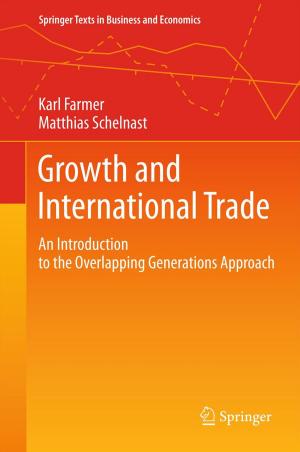Collaborative Promotions
Optimizing Retail Supply Chains with Upstream Information Sharing
Business & Finance, Management & Leadership, Operations Research, Marketing & Sales| Author: | Daniela Wiehenbrauk | ISBN: | 9783642133930 |
| Publisher: | Springer Berlin Heidelberg | Publication: | August 19, 2010 |
| Imprint: | Springer | Language: | English |
| Author: | Daniela Wiehenbrauk |
| ISBN: | 9783642133930 |
| Publisher: | Springer Berlin Heidelberg |
| Publication: | August 19, 2010 |
| Imprint: | Springer |
| Language: | English |
Promotions are at the same time beloved and feared by both food retailers and branded goods manufacturers in today’s retail environment. Beloved because they attract smart customers and generate an immediate effect on a brand’s sale. Feared because there is uncertainty about the competitors’ behavior and the actual customer demand leading to high forecast errors. For the retailer, this results in a doom loop of over- or understocking with high inventory costs in the supply chain. Collaboration between retailers and the manufacturer disentangles the doom loop. The thesis reveals the appropriate kind and timing of information and develops a so called Competition Index. Inventory in the supply chain is eliminated and the customer is served better at a lower price. Based on a joint inventory and pricing model and an empirical analysis, it shows that the supply chain efficiency gains from collaborative promotions result in a win for customers, retailers and the manufacturer.
Promotions are at the same time beloved and feared by both food retailers and branded goods manufacturers in today’s retail environment. Beloved because they attract smart customers and generate an immediate effect on a brand’s sale. Feared because there is uncertainty about the competitors’ behavior and the actual customer demand leading to high forecast errors. For the retailer, this results in a doom loop of over- or understocking with high inventory costs in the supply chain. Collaboration between retailers and the manufacturer disentangles the doom loop. The thesis reveals the appropriate kind and timing of information and develops a so called Competition Index. Inventory in the supply chain is eliminated and the customer is served better at a lower price. Based on a joint inventory and pricing model and an empirical analysis, it shows that the supply chain efficiency gains from collaborative promotions result in a win for customers, retailers and the manufacturer.














![Cover of the book Homöopathie - die Fakten [unverdünnt] by Daniela Wiehenbrauk](https://www.kuoky.com/images/2017/november/300x300/9783662549469-rPGK_300x.jpg)
